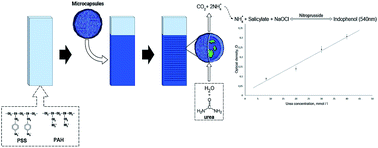Determination of urea concentration using urease-containing polyelectrolyte microcapsules
Abstract
Nowadays, the enzymological method used in clinical diagnostics has several problems: a short lifetime of the enzyme sensor in solution, its susceptibility in the presence of proteolytic enzymes, and the impossibility of multiple uses. We proposed the modification of the standard method of urea detection, which will solve the problems mentioned above. The main idea of the proposed approach was encapsulation of urease into microcapsules obtained by the method of alternate adsorption of oppositely charged polyelectrolytes. The determination was conducted with the help of unfixed (microdiagnosticum) and fixed microcapsules on a solid surface (diagnostic plate). Multiple uses of microdiagnosticum and diagnostic plate have been shown. The results obtained exhibited deviations and did not exceed the value of 9.6%. We determined the urea concentration in the serum blood by the standard Berthelot method using a diagnostic plate and a microdiagnosticum for detection in the urine. The results obtained differed from the results obtained using a free enzyme by no more than 4.26% for diagnostic plates and 1.67% for microdiagnosticum. The diagnostic plate exhibited detectable concentrations in the range of 5–50 mmol L−1 and linearity up to 40 mmol L−1; moreover, deviation from linearity did not exceed 10%, and the coefficient of variation did not exceed 7.17. Microdiagnosticum exhibited detectable concentrations in the range of 5–55 mmol L−1 and linearity up to 50 mmol L−1; also, deviation from linearity did not exceed 7%, and the coefficient of variation did not exceed 2.85.



 Please wait while we load your content...
Please wait while we load your content...